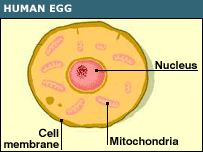Why an IVF Cycle is just like driving a
Car
Doing an IVF Cycle is just like driving a car.
When we drive a car, our aim is to use the vehicle to
reach our destination. Similarly, when a couple undergo an IVF Cycle, their aim
is to get good embryos, so they can have a baby.
A car is powered by 2 main parts - the Battery and the
Engine. In baby-making, the major components are the Sperm and the Egg.
What does the Battery do in a Car
The Battery's job is to kick-start the engine, so it gets ignited into action.
This is just what the sperm do to the egg !
The sperm's Job is to fertilise the egg, and when it does
so , it activates it, so that the embryo which is formed can continue to divide
and grow.
What does the Engine do in the Car
The engine is powered by fuel, and provides the energy
need to keep the car going. This is role
of the egg in reproduction too .
The mitochondria in the cytoplasm of the eggs are the powerhouse
of the cell, which provide the energy which drives embryo cleavage.
This means that in most cases, the role of the sperm is
limited to activating the egg. Once it has done so, it doesn't have much of a
role to play in embryo cleavage. Thus, once the battery has kick started the
engine, it remains a silent spectator during the rest of the journey.
What if the battery doesn't work properly
When the battery doesn't work, the engine won't start and
the car remains stuck ! Similarly, if the sperm don't work well, they won't be
able to activate the egg. Some sperm are dysfunctional, and cannot activate the
egg on their own. These sperm need some help, and this is provided by doing
ICSI. For example, in patients with globozoospermia, the acrosome ( cap on the
head of the sperm) is missing.
Such patients cannot conceive naturally. They need to
undergo ICSI cycle, wherein we can assist Oocyte Activation (AOA) using 4-bromo
calcium ionophore.
What happens when the Engine of a Car doesn't work
properly ?
If the embryo fails to divide properly
( there's lots of
fragmentation during cleavage, and the embryo is poor quality, or if it arrests
, this suggests the problem is with the mitochondria in the egg cytoplasm.
Sadly, there is no way of testing their function, except by actually doing IVF,
and seeing how the embryos grow in vitro.
This is usually seen in patients who have poor ovarian
reserve - typically, older women and those with low AMH values .
Sometimes, we can improve egg quality by tweaking the
superovulation protocol, but often this remains the major hurdle to achieving a
pregnancy in these women.








No comments:
Post a Comment